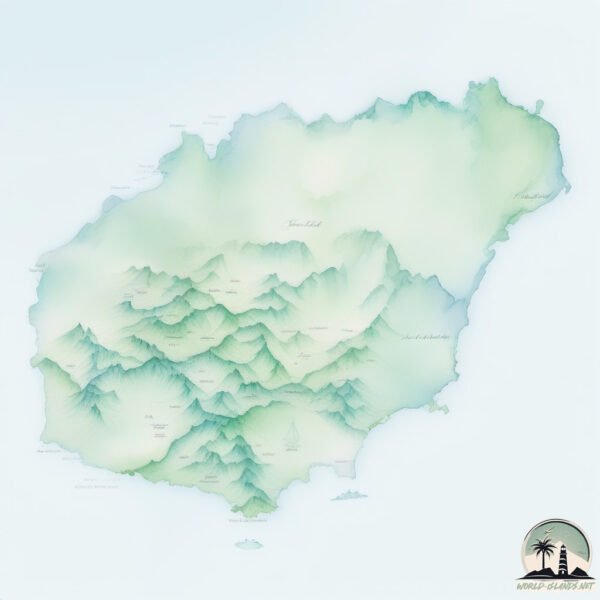Welcome to Hainan , a Tropical island in the South China Sea, part of the majestic Pacific Ocean. This guide offers a comprehensive overview of what makes Hainan unique – from its geography and climate to its population, infrastructure, and beyond. Dive into the details:
Geography and size of Hainan
Size: 34243 km²Coastline: 1692 kmOcean: Pacific OceanSea: South China SeaContinent: Asia
Hainan is a Giant Island spanning 34243 km² with a coastline of 1692 km.
Archipel: –
Tectonic Plate: Eurasia – One of the world’s largest tectonic plates, the Eurasian Plate covers a significant portion of Europe and Asia. It’s characterized by diverse geological features, including the Ural Mountains, the European Plain, and the Himalayas formed from its collision with the Indian Plate.
The geographic heart of the island is pinpointed at these coordinates:
Climate and weather of Hainan
Climate Zone: TropicalClimate Details: Tropical Monsoon ClimateTemperature: Hot
Climate Characteristics: Characterized by heavy rainfall, high humidity, and uniformly high temperatures, but with a distinct short dry season. It features a seasonal reversal of prevailing wind directions.
Topography and nature of Hainan
Timezone: UTC+08:00Timezone places: Australia/PerthMax. Elevation: 1840 m Wuzhi ShanMean Elevation: 189 mVegetation: Evergreen Broadleaf ForestTree Coverage: 38%
The mean elevation is 189 m. Dominating the island’s landscape, the majestic “Wuzhi Shan” rises as the highest peak, soaring to impressive heights. The island is characterized by Plateau: Elevated flatlands rising sharply above the surrounding area, with a maximum elevation over 500 meters but a mean elevation less than 300 meters, forming unique highland areas on islands.
Dominating Vegetation: Evergreen Broadleaf Forest
Vegetation: 16 vegetation zones – Exceptionally Diverse Island
Infrastructure and Travelling to Hainan
Does the island have a public airport? yes .
Does the island have a major port? yes .
The mean population of Hainan is 300 per km². Hainan is Moderately Inhabited. The island belongs to China .
The name of the island resonates across different cultures and languages. Here is how it is known around the world: Arabic: جزيرة هاينان; German: Insel Hainan; Spanish: Hainan; French: Hainan; Portuguese: Ilha de Hainan; Russian: Хайнань (остров); Chinese: 海南島
Continuing your journey, Naozhou Dao is the next notable island, situated merely km away.
Don'T Visit Hainan Island (China) Without Watching This Weather Guide
Planning a trip to Hainan? Check out this weather guide for all the information you need to have a perfect tropical paradise ...
Don'T Visit Hainan Island (China) Without Watching This Weather Guide
Planning a trip to Hainan? Check out this weather guide for all the ...
Planning a trip to Hainan? Check out this weather guide for all the information you need to have a perfect tropical paradise ...
The official 2018 Hainan Island Promotional Video
The official 2018 Hainan Island Promotional Video.
The official 2018 Hainan Island Promotional Video.
What China did to this Tropical Island is Unbelievable!
Welcome to Hainan – China's Tropical Paradise! Golden beaches, ...
Welcome to Hainan – China's Tropical Paradise! Golden beaches, crystal-clear waters, lush rainforests, and a skyline that just ...
China is classified as Emerging region: BRIC: Brazil, Russia, India, and China – Economies noted for their rapid growth and increasing influence on global affairs. The level of income is Upper middle income.
News – Latest Updates and Headlines from Hainan
Stay informed with the most recent news and important headlines from Hainan. Here’s a roundup of the latest developments.
Loading...
Social Media Posts about Hainan
Loading...
Please note: The data used here has been primarily extracted from satellite readings. Deviations from exact values may occur, particularly regarding the height of elevations and population density. Land area and coastline measurements refer to average values at mean high tide.

